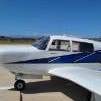Question about electric landing gear systems
-
Members Online
- bigmo
- Utah20Gflyer
- glbtrottr
- MB65E
- 802flyer
- Rmfriday
- bradp
- wombat
- TCC
- Supereri73
- toto
- amillet
- Smiles201
- tigers2007
- Rick Junkin
- 1967 427
- hammdo
- Ivan
- N201MKTurbo
- DXB
- laytonl
- ericrynehess
- EricJ
- raymondscott0321
- SukitCirrus
- mooniac58
- McMooney
- Deb
- StevenL757
- Justin Schmidt
- Adam Belle
- Aerodon
- redbaron1982
- 1980Mooney
- Sinani210
- haymak3r
- Gerbil


Recommended Posts
Join the conversation
You can post now and register later. If you have an account, sign in now to post with your account.